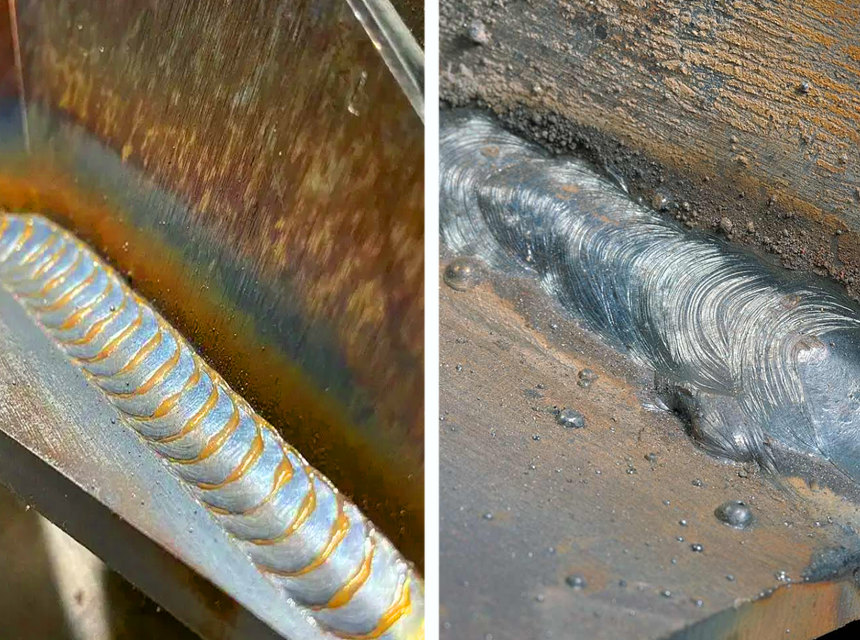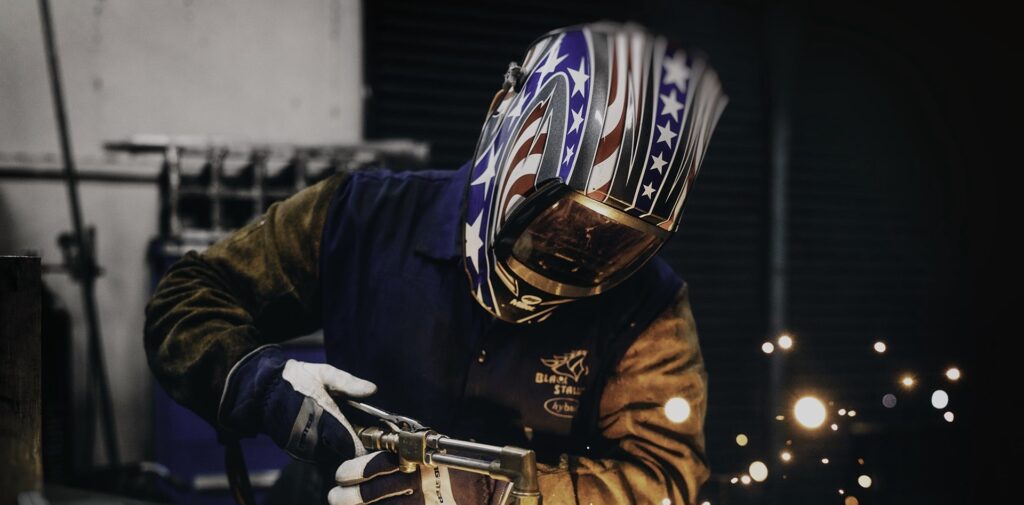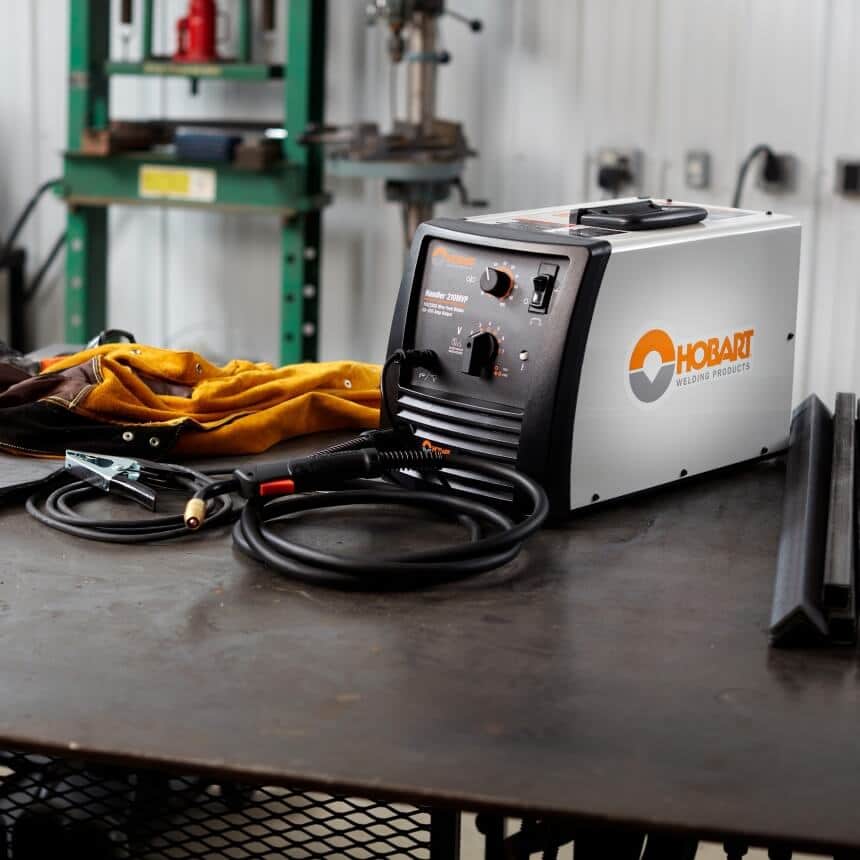Various types of welding require different types of equipment. This is not to say that welding machines have specific jobs and cannot function in others, but every type of welding machine has a job that is considered a better fit than others. So, before purchasing a welding machine and letting sparks fly, you should consider what you need the machine for and which type would best serve you.
If you need a model that performs well in multiple situations, the MIG welding machine is an excellent pick. Here, we will help you figure out just how the MIG welders work. Their versatility allows them to be as suitable for welding thin sheet metal as it would be in welding heavy steel pipes. Better still, it is not very complicated to use, and even an amateur can perform admirably using the machine. An example of an easy-to-use MIG welder is the Forney Easy Weld 140MP, which is quick to start and simple to control, making it perfect for beginners.
That’s one of the significant advantages of the MIG welders. The machine is easy to use for both amateurs and experts. It’s as straightforward as pointing the welding gun to the material to be welded, pulling the trigger, and watching everything work. To achieve this level of ease, though, one would need to possess basic knowledge of the MIG welder, its parts, and how they all come together to make such an easy-to-use machine. However, in any welding, every detail of protection is important. So don’t forget to choose your best welding shoes.
MIG welding is an arc welding process that utilizes a continuous solid wire that is heated and fed into a weld pool from a welding gun. This causes the two base materials to melt together and form a joint, which is the process’s goal. MIG stands for metal inert gas, and the method of welding is described as so because the welding gun that feeds the solid wire electrode also feeds a shielding gas along with the electrode. This gas is to help protect the weld pool from unwanted airborne contaminants.
The process was first patented in the United States in the late 1940s for utilization in aluminum welding. Trusted Source Gas metal arc welding - Wikipedia Gas metal arc welding (GMAW), sometimes referred to by its subtypes metal inert gas (MIG) and metal active gas (MAG) is a welding process in which an electric arc forms between a consumable MIG wire electrode and the workpiece metal(s), which heats the workpiece metal(s), causing them to fuse (melt and join). en.m.wikipedia.org Back then, the arc and the weld pool formed were protected by helium which was the first inert gas used as a shielding gas. Over time, though, argon also became very popular as a shielding gas, but CO2 was used as a shielding gas in the welding of carbon steel. However, due to the nature of CO2, any time CO2 or a CO2-argon mixture is used as a shielding gas, the process is referred to as metal active gas (MAG) processes instead.
The MIG welding makes use of an arc at the tip of the wire electrode. During the welding process, the wire electrode acts as both a heat source and a source of the welding joint’s filler metal. The arc located at the tip of the wire is required to melt along with the workpiece to create the weld pool.
The electrode itself is fed welding current via a copper contact tube. The weld pool is created as a result of the melting together of the arc, and the workpiece is protected by the shielding gas supplied through a nozzle surrounding the wire. The nature of the shielding gas depends on the type of metal being welded and the reason for the welding, but regardless, the function is the same; to protect the weld pool from contamination.
During the process, the wire used is continuously fed from a reel or spool powered by a motor drive. Continuous feeding is one of the reasons for the relatively high productivity of the process. The wire used may be solid or cored. While the solid wires are just simple drawn wires, the cored wires are composites made up of metal sheaths that may contain either powdered flux or metal filling within them.
The versatility of the MIG welding process also allows for it to be automatic, mechanized, or semi-automatic. If the process is designed to be automatic, no manual intervention would be required, and the wire feed rate, arc length, travel speed, and wire position would have all been set. In a mechanized process, the parameters, as mentioned above, may still require some adjustments during welding. However, the semi-automatic process requires the wire feed rate and arc length to be determined by the power source, while the travel speed and wire position would be determined manually by a welder.
Before you start using a MIG welder, you should know that the procedure’s operating features would be determined to a great extent by the mode of delivery of the metal from the electrode to the weld pool. The three major delivery modes are the droplet or spray, the dip or short-circuiting, and the transfer’s pulsed modes.
The short-circuiting mode of metal transfer is used to transfer the metal by dipping it into the weld pool. When using this method, care has to be taken to set the voltage and inductance right relative to the wire feed speed to minimize the molten metal’s spatter. The inductance, primarily, is also used to negate surges in current that may occur when the wire electrode dips into the weld pool.
The pulsed delivery method was developed to avoid short-circuiting and spatter by stabilizing the arc at low currents. The transfer of the metal is affected by the release of pulses, each possessing sufficient force to release a droplet of the molten metal at a time. This mode of metal transfer led to the development of the synergic pulsed MIG, which refers to a type of controller that enables the power source to be tuned for the wire composition and size while ensuring that the pulse frequency is in sync with the wire feed speed.
The droplet transfer uses a higher voltage to ensure that the wire electrode doesn’t make contact with the weld pool. Instead, the molten metal at the tip f the wire is transferred to the weld pool as small droplets or a spray. However, it should be noted that there is a minimum current level below which the molten metal would no longer be forcibly ejected as a spray but would instead form large droplets which would fall under normal gravitational forces and lead to spatter.
It should be clear that the short-circuiting and pulsed methods of metal transfer or delivery are utilized for low current operations, while the spray method is used with high welding currents.
In addition to protecting the weld pool from contaminants, the shielding gas also plays a role in the stability of the arc, the weld pool’s behavior, and the transfer of metal from the wire to the weld pool. Specifically, the shielding gas stabilizes the arc’s roots on the workpiece’s surface, ensures the smooth transfer of droplets to the weld pool, and forms the arc plasma.
Many gases can be used as shielding gases, but the specific gas used depends on the employed process and the type of material the welder is working with.
General-purpose gases for MIG welding processes are mixtures of argon, oxygen, and CO2, although special gas mixtures may contain helium.
Some of these steps are:
If the above steps have been taking to ensure your safety during welding, you must also ensure that your working area and equipment are in the right state to produce the best quality work. Such preparatory actions should not be limited to only the equipment, though. Emphasis should be placed on the workpiece to be welded also.
For instance, use a metal brush to clean the metal’s surface to get rid of contamination and ensure that when clamping your work metal down, no impedance present might affect the wire feed.
Once the metal is cleaned, a similar level of attention should be paid to the welding machine itself. Before using the machine, always check all cable connections and ensure that they are tight and free of damage. You could also check for leaks in the shielding gases’ supply as this could raise the cost associated with the use of your welding machine while leaving you with less protection against contamination.
Another common problem you might encounter during welding is too much or too little tension on the spool feeding the wire. You should, therefore, check this before you start welding to avoid any unnecessary stoppages once the real work is underway.
Lastly is the maintenance of the machine. Regularly clean the machine to remove any spatter that might be there, replace worn contact tubes, and replace rusty wires.
The MIG welding operation is widely used and accounts for a large portion of all weld metal deposited. This widespread use can be attributed to the fact that the MIG welding process is more versatile than the MMA, is more suitable for mechanization than the MMA, and has relatively higher deposition rates. It should, however, be noted that MIG welding requires a higher degree of skill on the part of the welder than the MMA does.
The MIG welding machine’s popularity as the go-to machine for professionals and beginners alike should be enough proof that it has numerous advantages. But there’s nothing like specifics to make the message stick.
The point and shoot nature, combined with the fact that the wire feed is continuous, means a welder can maintain control of the welding gun more efficiently and deliver a cleaner, quicker job.
Like all things in life, MIG welding is not perfect. Just as it has advantages, it also possesses disadvantages. Most people would argue that the benefits more than make the burdens bearable, but the following penalties should be taken into consideration:
If you are a beginner and are planning to take up welding as a hobby or you want to add a new skill to make you as handy as possible, here are some tips to keep in mind that may make your learning more straightforward, with emphasis placed on things you might find difficult:
Naturally, welding machines are quite expensive, and the versatility and ease with which a MIG welding machine can be operated make it even more costly than most. Along with the fact that not all MIG welding machines are suitable for all jobs, this makes having the right information and orientation necessary when purchasing a welding machine.
Not to worry, though; we got you covered with factors to consider when purchasing a MIG welding machine that provides the best value for the cost that you can get.
Before reading this, you might have been considering hiring a professional to help you with that new joint you need to weld, but this sounds just too interesting for you not to try it.
We hole this article helped you figure out how MIG welders work. All that’s left to do is to purchase the welder most suitable to your needs and get started with making the sparks fly!





